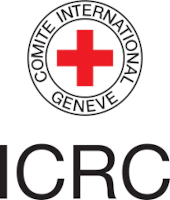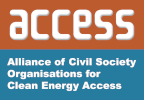Difference between revisions of "Energy Efficiency in Humanitarian Infrastructure - A Practitioners Guideline"
***** (***** | *****) m Tag: 2017 source edit |
***** (***** | *****) m Tag: 2017 source edit |
||
| Line 19: | Line 19: | ||
= Energy Efficiency and Safety Guidelines = | = Energy Efficiency and Safety Guidelines = | ||
The following five fields of actions, which shall be undertaken to improve energy efficiency and reduce electrical and fire hazards in humanitarian infrastructures, are distinguished: | The following five fields of actions, which shall be undertaken to improve energy efficiency and reduce electrical and fire hazards in humanitarian infrastructures, are distinguished: | ||
| + | |||
| + | <div class="grid stretch-items"> | ||
| + | |||
| + | <div class="width-1-5 width-m-1-2 card"> | ||
| + | [[file:icon-contribute.svg|center|100px|link=Contribute to the Mozambique Off-grid Hub]] | ||
| + | '''Power Generation''' | ||
| + | </div> | ||
| + | |||
| + | </div> | ||
Revision as of 13:20, 22 March 2022
Energy Efficiency TIER-Approach
The analysis of energy efficiency options in humanitarian infrastructures is critical because energy supply is usually scarce and expensive in these locations. Actions for saving energy are shown in the following tiered approach:
| TIER 1 | Measurement of energy consumption is the first intervention to undertake. It is a prerequisite for all interventions because what cannot be measured cannot be improved. |
| TIER 2 | Next, energy conservation measures – often referred to as behavioural change - shall be implemented. Turning off appliances when they are not in use, closing doors and windows while running air conditioning, and switching off electric boilers when they are not in use are good examples. |
| TIER 3 | Once the previous points have been implemented, energy efficiency options associated with technological change can be considered like improving thermal efficiency of buildings or establishing procurement standards for energy efficient appliances. The objective is to reduce the energy consumption for a given service or level of activity. |
| TIER 4 | After contemplating and implementing the previous steps, renewable energy (RE) sources shall be considered. In this way, the new green power supply can result in significate cost-effectiveness, as it would be introduced into a pre-existing optimised power system. |
With a higher TIER, the amount of the necessary investments and the complexity of the measures also increase. Traditionally, RE power plants have been significantly more expensive and complex to implement than the interventions in Tier 2 and Tier 3. However, RE power plants, particularly solar PV power plants, have dramatically reduced in cost in the past decade. This, coupled with innovative financing and plug-and-play solutions, has transformed the market. Today Tiers 2, 3, and 4 could be easily re-grouped into a holistic solution in which energy conservation, technology upgrades, demand-response management, and renewable energy sources are comprehensively addressed and in terms of each factor’s impact on the other. Moreover, each kWh of electricity saved through energy efficiency measures represents a saving that can be directed to the core activity of humanitarian activities, thus resulting in a higher efficiency budget expenditure and greater operational results.
Energy Efficiency and Safety Guidelines
The following five fields of actions, which shall be undertaken to improve energy efficiency and reduce electrical and fire hazards in humanitarian infrastructures, are distinguished:



















